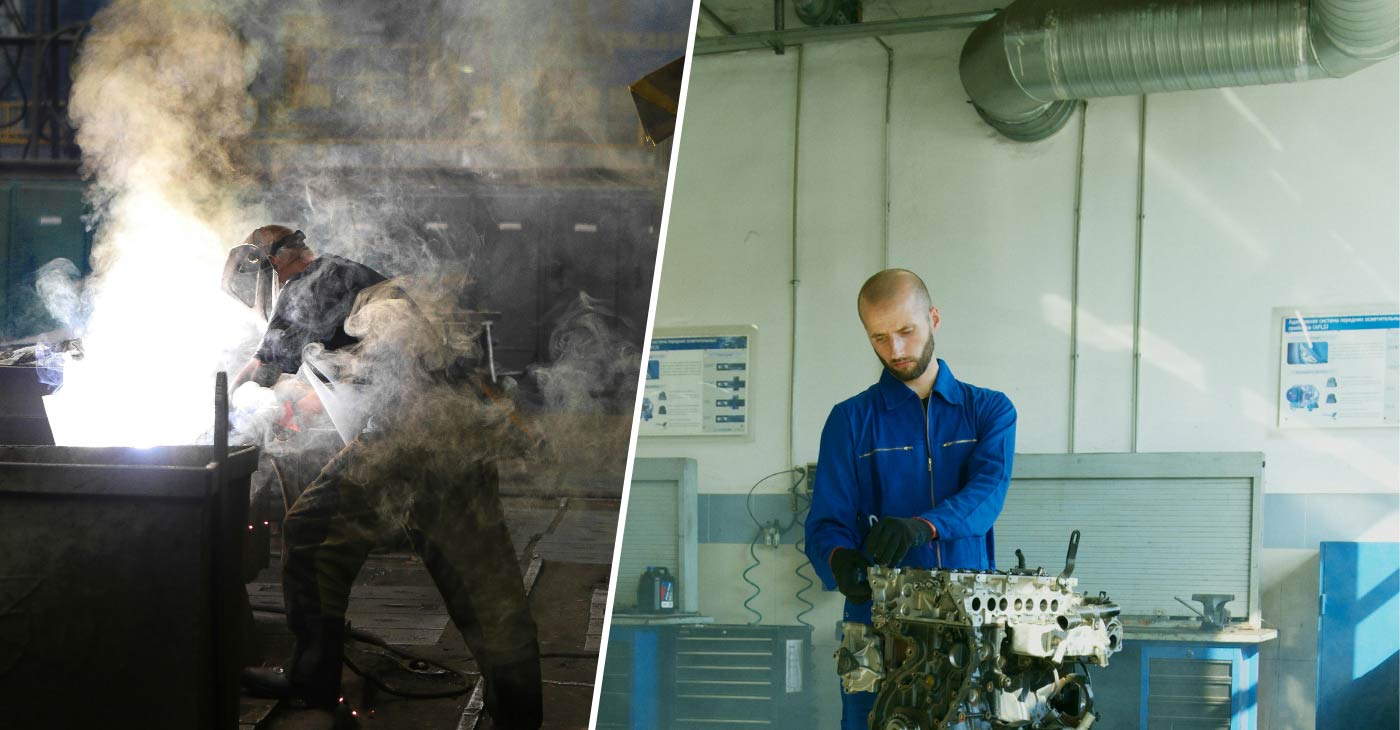Why is a fume extraction system required in a workshop?
Share
Share

An advanced fume extraction system in automotive workshops is essential to drastically reduce technicians’ exposure to hazardous airborne contaminants, creating a safer and more productive environment. In workshops where critical operations such as vehicle diagnostics, MIG and TIG welding, soldering, exhaust system repairs, and heavy-duty maintenance are performed, harmful fumes, particulates, and volatile organic compounds (VOCs) are often produced. These fumes pose serious health risks to technicians, including respiratory issues, metal fume fever, and long-term conditions like pneumoconiosis.
Fume extraction systems serve as high-precision solutions, capturing pollutants directly at the source—before they reach technicians’ breathing zones. Utilizing high-capacity extraction arms, articulated ductwork, HEPA filtration, and industrial-grade fans, these systems effectively remove and filter out hazardous fumes and particulates.
This not only ensures a clean working environment but also enhances operational efficiency and lowers healthcare costs. Additionally, such systems help workshops comply with stringent environmental and occupational safety regulations, ensuring that harmful emissions are controlled. By integrating a robust fume extraction system, workshops can safeguard worker health, maintain environmental standards, and optimize workflow within the automotive industry.
Automotive workshops are vital to maintaining and repairing the complex systems that modern vehicles rely on. From high-performance diagnostics to chassis alignment and precision welding, workshops handle a range of services that ensure vehicles meet safety standards and remain roadworthy. However, many of these processes—such as diesel particulate filter (DPF) cleaning, catalytic converter testing, and metal fabrication—generate hazardous fumes that, if left unchecked, can severely impact the health of technicians and the integrity of equipment.
Throughout various processes in automotive workshops, invisible and highly dangerous airborne contaminants are released. Welding fumes, exhaust emissions, and VOCs from solvents, adhesives, and coatings can expose technicians to harmful pollutants. These include metal oxides, nitrogen oxides (NOx), carbon monoxide, ozone, and VOCs—some of which originate from welding flux, brake fluid vapor, or even diesel exhaust particulates (PM2.5). Prolonged inhalation of these contaminants can cause serious respiratory issues like chronic obstructive pulmonary disease (COPD), hypersensitivity pneumonitis, and in severe cases, cancer.
Fume extraction systems act as the front-line defense against airborne hazards in automotive workshops. They are designed to capture and contain these toxic fumes at their source—whether from welding stations, soldering benches, or exhaust testing bays—before the contaminants spread into the surrounding air. Imagine these systems as highly efficient capture units, integrated with local exhaust ventilation (LEV) technologies that pull harmful gases and particulates out of the workspace as soon as they are emitted.
By maintaining optimal air quality and preventing the accumulation of hazardous fumes, an advanced fume extraction system ensures that workshop environments remain compliant with both occupational safety and environmental standards, while protecting technicians’ health.
Exposure to toxic fumes and particulates generated during essential workshop tasks like welding, brake repairs, or exhaust diagnostics can have severe, long-term health impacts. Let’s explore these risks in more detail:
The severity of these risks depends on the type and concentration of the airborne contaminants. This is why fume extraction systems play a crucial role in reducing exposure, ensuring that workshop employees remain protected.
Fume extraction systems offer numerous benefits beyond protecting technicians’ health. Let’s explore the wider impacts these systems have on workshop operations:
1. Enhanced employee safety
The primary function of fume extraction systems is to significantly improve the safety of the working environment. By capturing and eliminating airborne pollutants—whether they come from arc welding, grinding, or exhaust emissions—these systems drastically reduce the risk of respiratory illness, metal fume fever, and long-term health complications. Healthier workers mean fewer sick days, reduced healthcare costs, and increased morale, all contributing to the overall efficiency of the workshop.
Selecting the right fume extraction system for an automotive workshop depends on several key factors. Below are critical considerations:
Source capture systems – These systems are designed to capture contaminants directly at their point of origin, using extraction arms, downdraft tables, or hoods positioned near welding stations, exhaust vents, or cutting areas. This method ensures maximum efficiency in controlling airborne pollutants.
General ventilation systems – These systems provide broad air circulation throughout the workshop, ensuring that ambient air is kept clean. Though not as efficient as source capture, they work well in tandem with localized extraction systems in larger spaces or for diffuse sources of contamination.
The layout of your workshop, as well as the specific tasks performed (e.g., exhaust testing, metal fabrication, engine tuning), will determine the design and placement of the fume extraction system. The system must be strategically installed to ensure optimal extraction from all critical areas, including welding bays, paint booths, and service pits.
The specific contaminants produced in your workshop—such as fine metal particulates, VOCs from solvents, or exhaust fumes—will determine the type of filtration technology required. High-efficiency particulate air (HEPA) filters or activated carbon filters may be needed for different pollutants, ensuring optimal air purification.
Given the complexity of selecting the right fume extraction system, consulting with an industrial ventilation expert is highly recommended. These specialists can evaluate your workshop’s specific needs and provide customized recommendations for the most efficient and compliant extraction solution. They can also assist with HVAC system design, installation, and maintenance to ensure long-term performance and safety.
A fume extraction system in an automotive workshop is more than just a health and safety tool. It’s an investment in the long-term health of your technicians, environmental compliance, and operational efficiency. By reducing exposure to hazardous airborne pollutants, fume extraction systems create healthier workspaces, leading to increased productivity and reduced health-related costs. Furthermore, they help workshops comply with emissions regulations and contribute to a more sustainable industry.
As the automotive industry continues to evolve, incorporating advanced fume extraction systems is not just a choice—it’s a necessity for ensuring a cleaner, safer, and more efficient future.
Leave a Reply